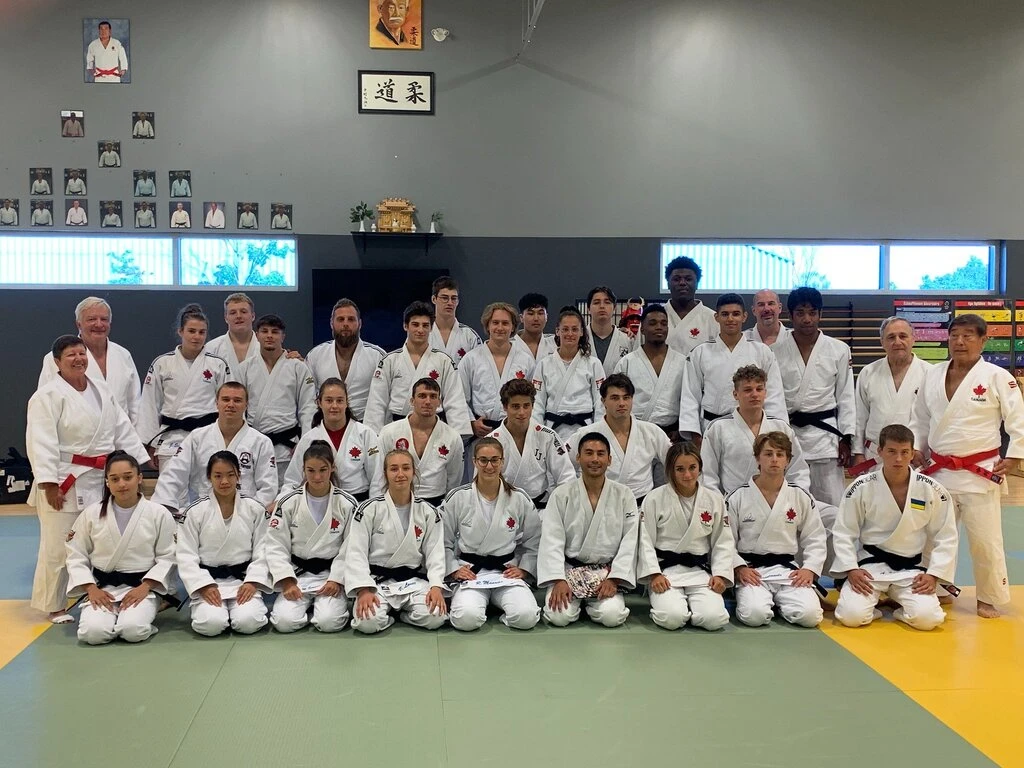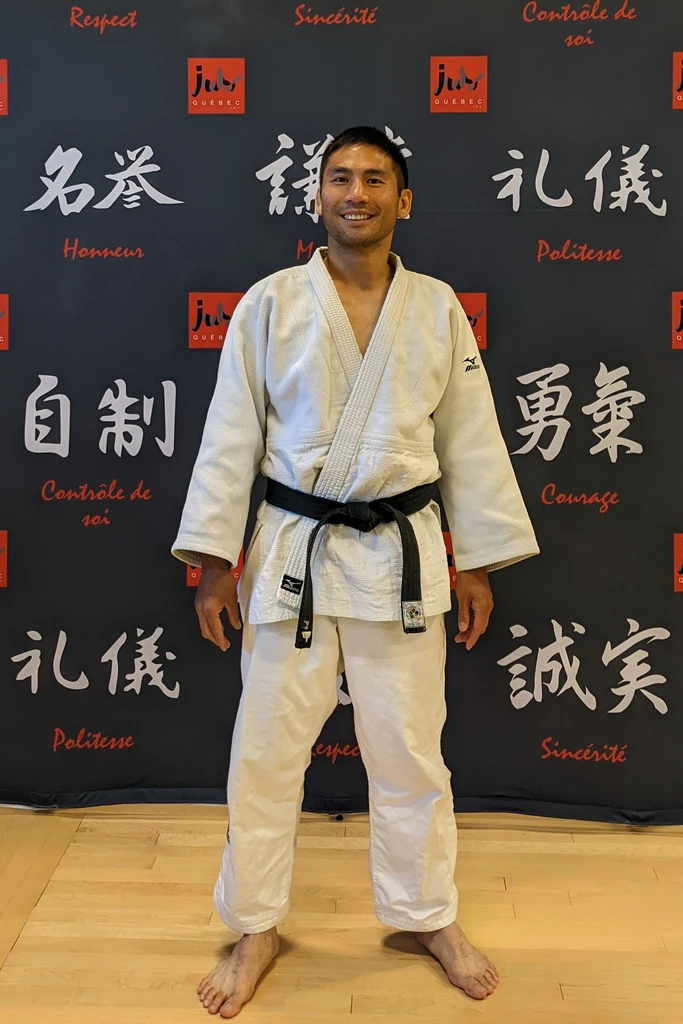pic: Vincent Scotto/Judo Québec.
In the “better late than never” category, I graded for godan (5th dan) in judo. I could have graded in 2019, but I didn’t get to it that year, and then 2020 and 2021 were… difficult. Typically, grading requires a partner who is willing to put in dozens (hundreds?) of hours working on kata with you. But in 2021 Judo Canada introduced a competitor-stream grading which I was eligible for, if I could collect a couple more competition wins in tournaments on the Canadian circuit.
Despite COVID’s best efforts to disrupt everything, I scored a win at 2022 senior nationals. (I planned to go to the Manitoba Open—cancelled—and the Edmonton and Pacific Internationals—both postponed to coincide with my brief trip to NZ in April). I thought that just one win wouldn’t be enough, but then when collecting drawsheets from past tournaments, I found a win that I hadn’t recorded (surprise!). There we go; that was my 210 points: 22 wins, 20 by full points and 2 by half points; at Rendez-Vous Canada, the Pacific International, Edmonton International, Ontario Open, Quebec Open, and senior nationals.
The grading
The competitor-stream grading is a clinic. In Quebec, it’s a day and a half. You show up and, on the first day, the clinic instructors walk you through the katas on the curriculum. Then you do a demonstration on the second day.
At the clinic there were 29 candidates for shodan (1st dan black belt), 3 for nidan (2nd dan), 1 for sandan (3rd dan), and me (5th dan). This is not that unusual in terms of the grade distribution; the Quebec annual promotion counts look like that.
I was absolutely privileged to have Daniel de Angelis, 7th dan and Director on the IJF Kata commission, and Jacques Côté, 6th dan and president of the Quebec Comité provincial des grades et katas, to show me the ju-no-kata and Kodokan goshin-jutsu, and I’m extremely grateful for their endless patience. These katas are quite different from what we normally do in judo; ju-no-kata is an abstract view of judo and contains no throws, while goshin-jutsu is a self-defense kata vs punches, kicks, and armed opponents. It’s a lot to take in at once. Jacques also mentioned that they’d just been reviewing it for 10 weeks before, so maybe feeling pretty lost wasn’t just me.
Anyway, the shodan candidates demonstrated a set of the nage-no-kata (throwing techniques) from the first three sets; the nidan candidates demonstrated a set from the last two sets; the sandan candidate demonstrated a set from the katame-no-kata (groundwork techniques); and I presented a technical demonstration of my choice (I talked about analogies between standing technique and groundwork). The competitors have good throws, even if the formal elements of the kata are a bit rough.
Implications
The thing about shodan is that you get a fancy new (black) belt. You don’t get a new belt again until 6th dan, where you get a red and white belt. (Under the current curriculum, I should be on track to be eligible in 8 years). In some sense, higher dan grades are extrinsic motivation; but, like being promoted to Professor at the University of Waterloo, it doesn’t show, and there is no other benefit than just having it.
OK, so what does it all mean? Well, I am middle-aged (even though I don’t look it), and 5th dan is a middle grade. Grades depend on context, and in some ways we—outside of Japan—make more of them than we should. It’s pretty standard for kids in Japan to have 1st dan by the end of high school and 3rd dan by the end of undergrad. On the other end, 6th dan with the red and white belt, is a kodansha, or high grade. Fifth dan is the last grade before that. It’s more than respectable but not Extremely Distinguished.
They say that 1st dan is when you really start learning judo. Well, that was in 1996 for me, so I’ve been learning judo for 26 years now. One would expect to have a breadth of experience: most things should not be a surprise, though there’s always more to learn and ways to improve. By this stage, one should very much have one’s own personal judo (hence technical demonstrations at gradings), and be able to share it with others.
Next up
Having achieved the 5th dan as a member of my home club, Torii, I feel like my job there is done, and I’ll be switching to Judo Ontario so that I can referee more national tournaments. (There are too many high-level Quebec referees and not enough spots at nationals).
It struck me that, for the first time since the 1990s, I no longer have to collect grading points. I have spreadsheets with all of my judo activities (tournaments, refereeing, clinics) for the past 10 years. I don’t have to do that anymore, and competition wins no longer contribute to a future grading. I just need to track career achievements. Probably a good idea to record refereeing data still for referee gradings (which is a whole different thing.)

